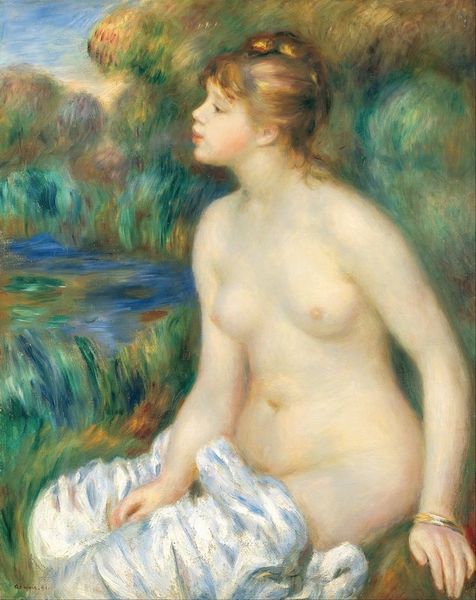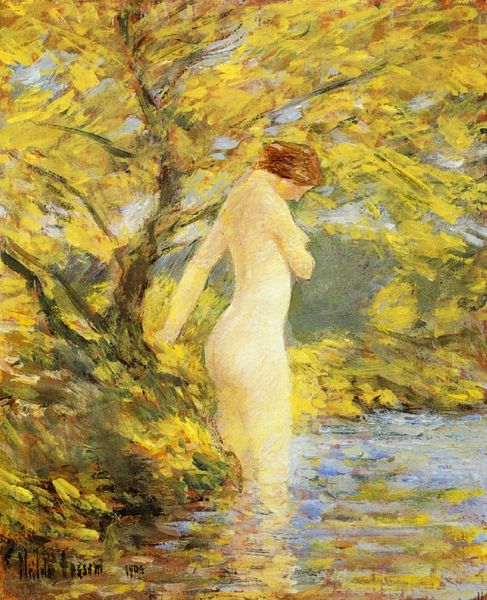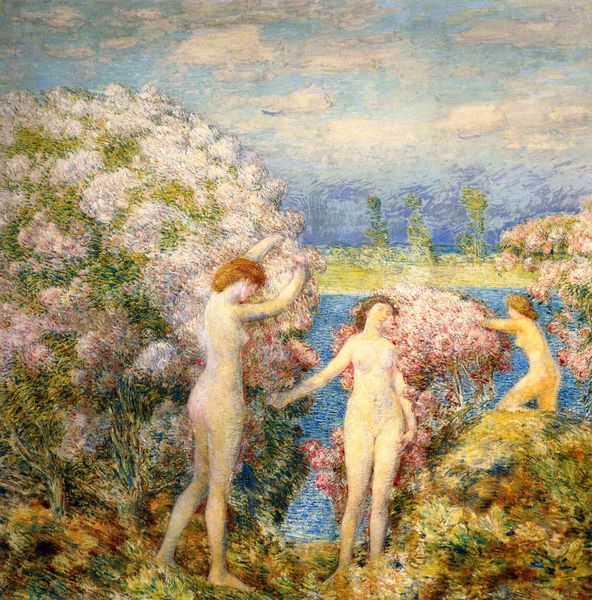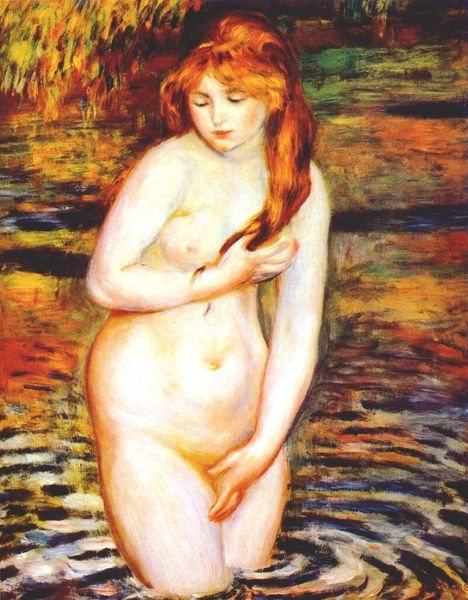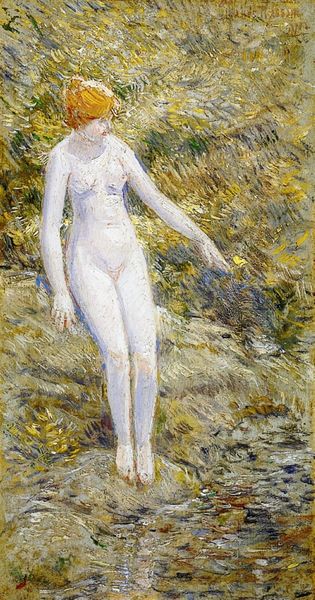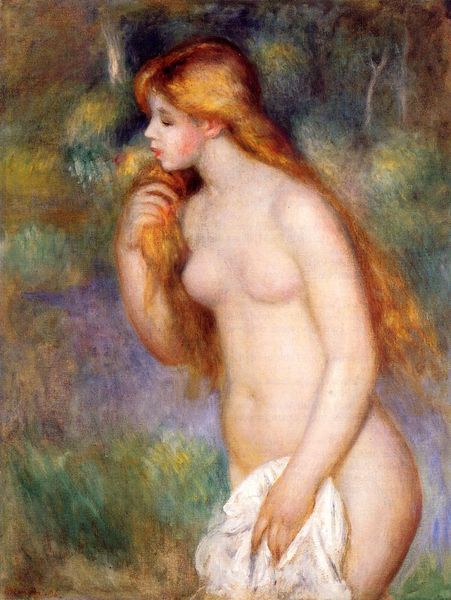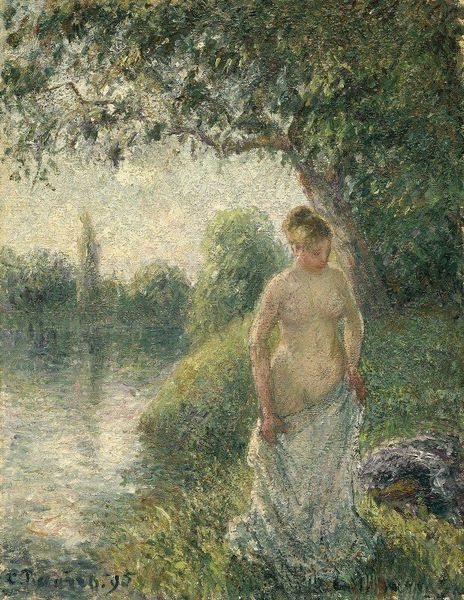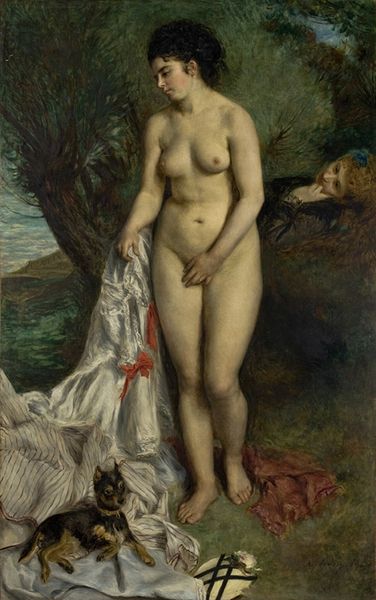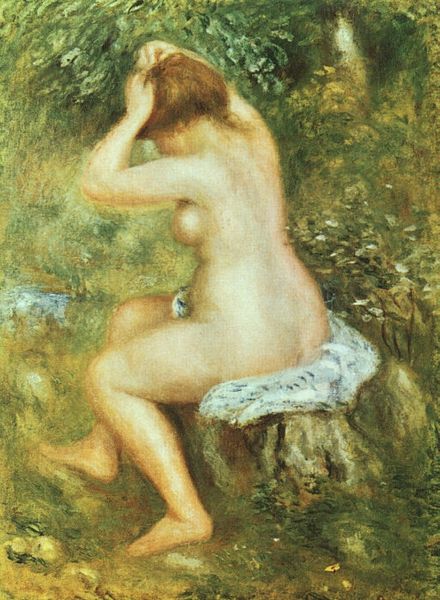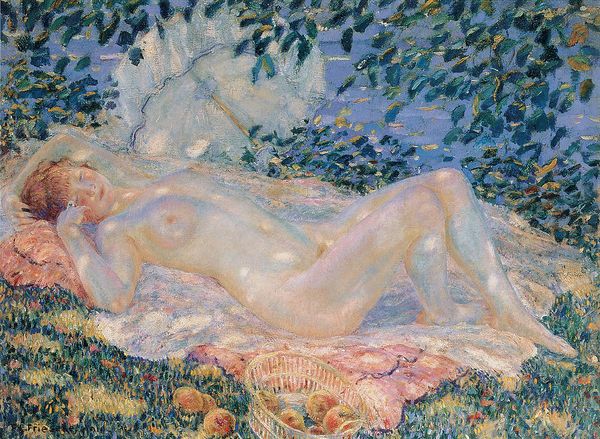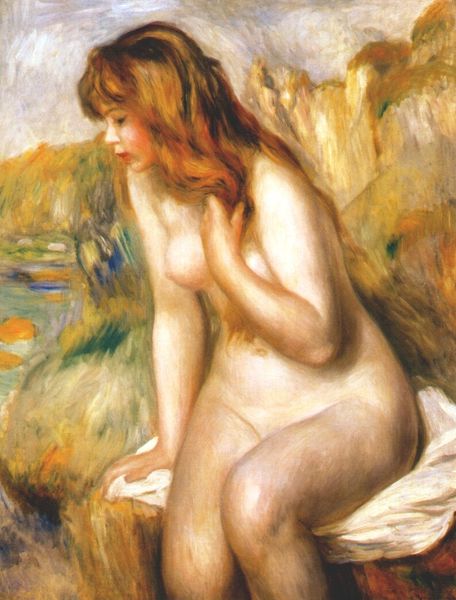
Copyright: Public domain
Editor: This is Childe Hassam’s “Morning, Old Lyme,” painted around 1905, in oil. It looks like an impressionist painting of a nude figure in a landscape. I'm immediately struck by how the textures in the paint create this hazy, dreamlike effect. What can you tell me about it? Curator: Hassam’s painting, read through a materialist lens, forces us to consider the very act of its creation. Note the emphasis on the impasto technique – the thick application of paint. How does this physicality of the paint itself transform the image, forcing a consideration of labor? Think about who would be consuming images such as this and in what setting. Editor: So, you are saying we should focus on the process of how the painting was made rather than just looking at the woman in the image? Curator: Exactly. We must consider the societal implications inherent to both the figure *and* the craft involved. This work isn't solely about beauty; it is also a product of labor and economic factors of early twentieth-century art. Note, for instance, the visible brushstrokes - that deliberate flaunting of the material’s presence in constructing an ethereal and fleeting scene. Consider also that it was painted en plein air: what impact did that have on the materiality and process? Editor: I never considered it from that angle. How does that challenge more conventional views of Impressionism? Curator: It asks us to rethink Impressionism's focus on light and fleeting moments, by looking at how those moments are constructed through physical labor and the market forces impacting that work. Where do "high art" concerns like capturing light intersect with the everyday labor that makes it? Editor: This makes me think about how artists even today are dealing with issues of production, labor, and consumption in a very conscious way. I appreciate your take on this; it really broadened my understanding of Impressionism. Curator: And, it challenges the viewer to engage actively, to deconstruct rather than simply observe. Always ask what lies behind the visible.
Comments
No comments
Be the first to comment and join the conversation on the ultimate creative platform.
